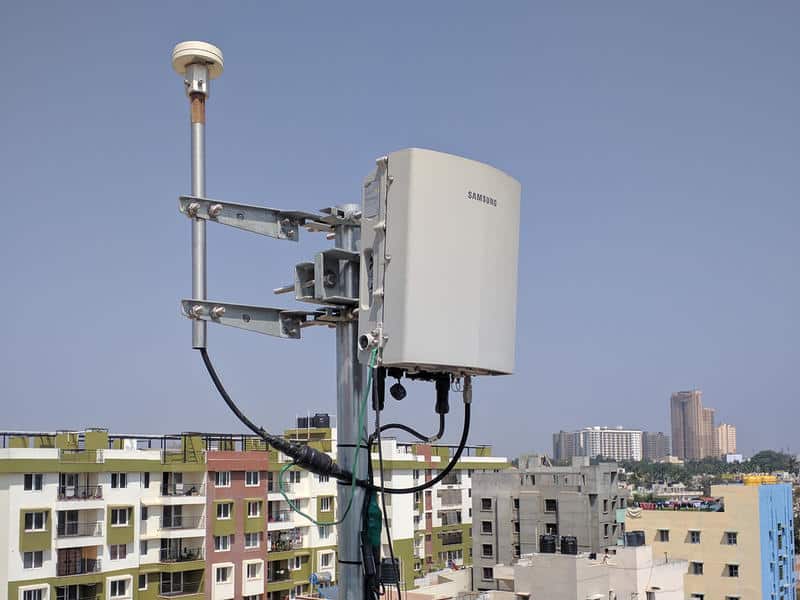Cell phone's will have fallback to 4G and 3G for a while which mainly makes it a issue with single band fixed home service...
One big reason why 5G will be DOA
- Thread starter Mr. Sheep
- Start date
- Latest activity Latest activity:
- Replies 30
- Views 6K
You are using an out of date browser. It may not display this or other websites correctly.
You should upgrade or use an alternative browser.
You should upgrade or use an alternative browser.
If most of their frequency is above 6 Ghz then why are the trying to get 100 Mhz of the lower C Band range?
Because the C band uplink is on 6 Ghz, you only see the downlink at 4 Mhz.
Rain fade will have near zero affect on 5g service. You have made assumptions about rain fade that are false. I work in the satellite business, we use frequencies all the way up to 30 Ghz. At C band, 6 Ghz uplink 4 Ghz downlink rain fade is not a factor. Maybe 1-2 db fade at most. Even at 30 Ghz in a downpour, less than 4 db usually. A short terrestrial path such as cell sites you will see no issues.
Rain fade will have near zero affect on 5g service. You have made assumptions about rain fade that are false. I work in the satellite business, we use frequencies all the way up to 30 Ghz. At C band, 6 Ghz uplink 4 Ghz downlink rain fade is not a factor. Maybe 1-2 db fade at most. Even at 30 Ghz in a downpour, less than 4 db usually. A short terrestrial path such as cell sites you will see no issues.
From everything I have read that isn't quite true or maybe a better way to put it, there is more to the story. 5G is most certainly subject to rain fade.You are correct distance to the cell site when short will minimize it. But in heavy downpours when it becomes more dense those at the outer limits of signal indeed could see a significant fall off. That doesn't mean it can't be overcome of course by making sure there are enough towers and maybe stronger receiving antennas where needed.
Put rain fade together with the signal does not penetrate buildings as well and there is the chance for situations of losing the signal or it being too low. Again, no doubt it will be overcome by finding ways to mitigate it.
I have worked in the satellite industry both military and commercial since 1982. Some of what you are saying sounds like what a sales person or manager would say, not an engineer or technician that works in the field.Rain fade will have near zero affect on 5g service. You have made assumptions about rain fade that are false. I work in the satellite business, we use frequencies all the way up to 30 Ghz. At C band, 6 Ghz uplink 4 Ghz downlink rain fade is not a factor. Maybe 1-2 db fade at most. Even at 30 Ghz in a downpour, less than 4 db usually. A short terrestrial path such as cell sites you will see no issues.
No cellphones will work on fixed home service...it will work like rural broadband...wireless connecting to a router
Sent from my SM-G950U using the SatelliteGuys app!
Cell phone's will have fallback to 4G and 3G for a while which mainly makes it a issue with single band fixed home service...
Sent from my SM-G950U using the SatelliteGuys app!
I thought I heard a while back that the future was people's ota antennas would not only receive but transmit signal (mesh) to get other people signals that couldn't reach the towers directly. I'm surprised that this isn't implemented into more devices for a company to use to have service available in many more locations.
Sent from my iPhone using SatelliteGuy
From everything I have read that isn't quite true or maybe a better way to put it, there is more to the story. 5G is most certainly subject to rain fade.You are correct distance to the cell site when short will minimize it. But in heavy downpours when it becomes more dense those at the outer limits of signal indeed could see a significant fall off. That doesn't mean it can't be overcome of course by making sure there are enough towers and maybe stronger receiving antennas where needed.
Put rain fade together with the signal does not penetrate buildings as well and there is the chance for situations of losing the signal or it being too low. Again, no doubt it will be overcome by finding ways to mitigate it.[/Q
I have worked in the satellite industry both military and commercial since 1982. Some of what you are saying sounds like what a sales person or manager would say, not an engineer or technician that works in the field.
We just do not see much rain fade with C band, we have a 5-6 db fade margin and don't have issues until we start talking about snow in dishes, wet snow will kill them quick. And with Ka, there is more we design for that with more fade margin. I am not involved with wireless but it is hard to see how the short terrestrial paths 5G will rely on will be greatly affected by rain fade with MIMO and beam forming capability.
That may have been someone's fantasy, but I suspect that it has little to no basis in reality. I reason that OTA reception antennas make for lousy transmission antennas. Further, any of them that has a conventional amp or pre-amp on them literally can't carry a signal backwards to the input side of the amp.
Receiving antennas can be forgiving. But when it comes to transmitting, the antenna must be tuned to transmit on that frequency. Also a good comment about the pre-amp.

Harvard Physicist: 'No Safe Way To Implement 5G'
5G technology is the holy grail of Technocrats who desperately want to enable a ubiquitous command-and-control network of IoT devices to control human populations en-mass. Thus, safety research on toxic effects is being aggressively suppressed.
 www.technocracy.news
www.technocracy.news
Yes! I was so sad when apple took away the ability to see the numerical signal strength. I used to find the best signal in my hotel rooms and such to run the hotspot from.Yup, I've got a smartphone setup as a hot spot and fastened to my bedroom window with velcro because that's where it picks up the best signal from the cell tower it's connecting to.
I just came across an article about 6G being developed: Army Research Lab explores new '6G' and beyond wireless network
Similar threads
- Replies
- 12
- Views
- 2K
- Replies
- 7
- Views
- 2K
- Replies
- 8
- Views
- 3K
- Replies
- 10
- Views
- 2K
Users Who Are Viewing This Thread (Total: 0, Members: 0, Guests: 0)
Who Read This Thread (Total Members: 2)
Latest posts
-
-
I
-
-
TATSC 3.0: The NextGen TV Standard Explained
- Latest: TWiT Tech Podcast Network

